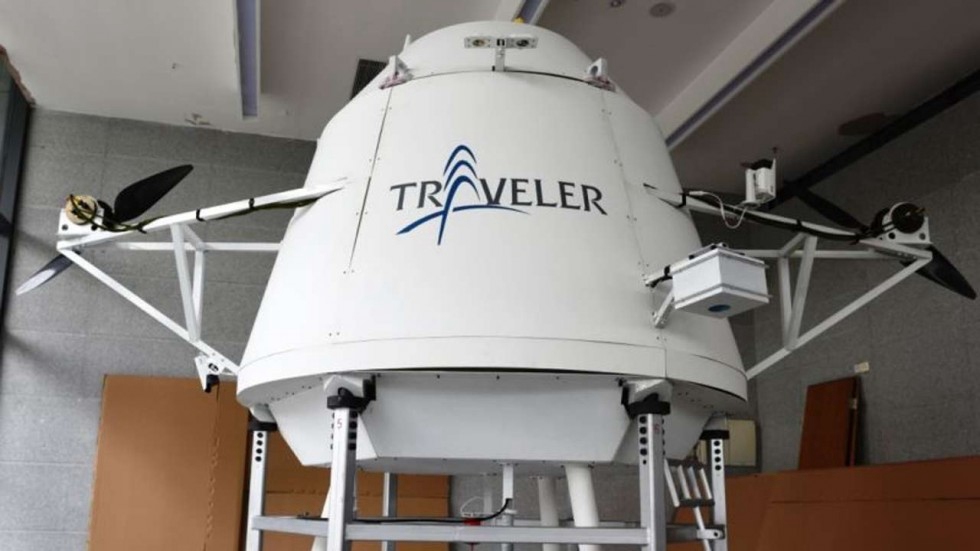


[File photo]
A Shenzhen-based technology company plans to launch a manned near-space flight in 2017, despite its failed attempt to send a turtle into near space on Nov. 9
The Traveler-II Beta, a flying device designed by Kuang-Chi Group, a technology company known for its near-space flight research, failed to reach the near space region of Earth’s atmosphere, which lies between 20 and 100 kilometers above sea level. Near space is more than twice as high as altitudes frequented by commercial airlines.
According to Thepaper.cn, a high-altitude balloon carrying a 2.5-meter-wide cabin to near-space heights was launched on Nov. 9 in an effort to test the possibility of comparable manned flight in the future. The spacecraft was supposed to stay aloft in near space and conduct over 13 scientific missions including space-Earth communication. However, the device lost its connection to the ground after reaching the height of 12 kilometers.
“Near-space flight is a cutting-edge technology. It’s never easy to carry out this kind of research, and uncertainties [as well as failure] are common during preliminary tests. But with the experience and data collected from this flight, we will improve our spacecraft and continue conducting tests on manned flight in near space,” said Luan Lin, founder of Kuang-Chi.
The company’s manned spacecraft is in its final stage of assembly, and cabin tests are expected to be completed by the end of 2016. A manned flight will likely be carried out in 2017, Thepaper.cn reported.
This is not the first time that the company has tested its near-space flight technologies. In 2015, the company completed its first unmanned flight test in New Zealand, reaching the height of 21 kilometers and successfully transmitting data back to the ground.
 Fire brigade in Shanghai holds group wedding
Fire brigade in Shanghai holds group wedding Tourists enjoy ice sculptures in Datan Town, north China
Tourists enjoy ice sculptures in Datan Town, north China Sunset scenery of Dayan Pagoda in Xi'an
Sunset scenery of Dayan Pagoda in Xi'an Tourists have fun at scenic spot in Nanlong Town, NW China
Tourists have fun at scenic spot in Nanlong Town, NW China Harbin attracts tourists by making best use of ice in winter
Harbin attracts tourists by making best use of ice in winter In pics: FIS Alpine Ski Women's World Cup Slalom
In pics: FIS Alpine Ski Women's World Cup Slalom Black-necked cranes rest at reservoir in Lhunzhub County, Lhasa
Black-necked cranes rest at reservoir in Lhunzhub County, Lhasa China's FAST telescope will be available to foreign scientists in April
China's FAST telescope will be available to foreign scientists in April "She power" plays indispensable role in poverty alleviation
"She power" plays indispensable role in poverty alleviation Top 10 world news events of People's Daily in 2020
Top 10 world news events of People's Daily in 2020 Top 10 China news events of People's Daily in 2020
Top 10 China news events of People's Daily in 2020 Top 10 media buzzwords of 2020
Top 10 media buzzwords of 2020 Year-ender:10 major tourism stories of 2020
Year-ender:10 major tourism stories of 2020 No interference in Venezuelan issues
No interference in Venezuelan issues
 Biz prepares for trade spat
Biz prepares for trade spat
 Broadcasting Continent
Broadcasting Continent Australia wins Chinese CEOs as US loses
Australia wins Chinese CEOs as US loses